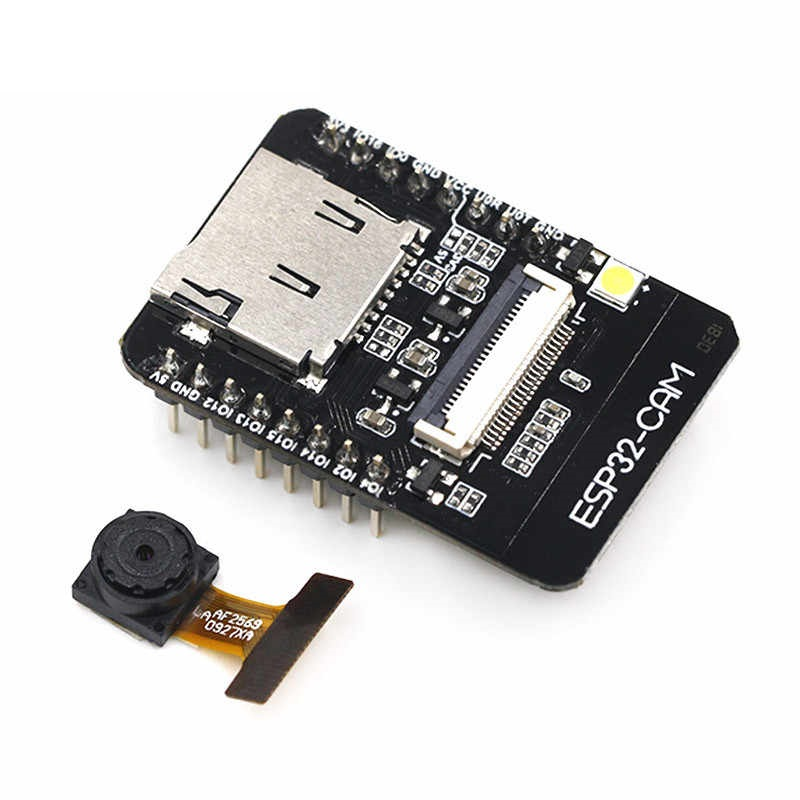
- #Tiny arduino camera how to
- #Tiny arduino camera full
- #Tiny arduino camera professional
- #Tiny arduino camera download
In the meantime I set my 3D printer to work on 3D printed adapters. A metal one is on its way (May 10) from China, a metal one. This requires a C mount to Canon adapter. The C mount allows more freedom in the choice of lenses, so I thought about checking out my (really high quality) Canon EF lenses. The bigger one is better, more a telelens. The small one has a reasonable depth of view, and a wide view and lots of cushion distortion and color aberration. I have bought both together with the camera, resulting in reasonable images but a pain to focus, let alone to change the focus often.

Since the camera comes without lens, but has a C or CS lens mount adapter, it is possible to choose a lens, like the two available form the Pi Foundation. Not to be positioned as a Pi Camera V2 replacement (much more expensive, larger in dimensions), it can be a quality camera to do projects with.Ĭertainly not a photo/video camera replacement (even a phone camera is much easier to wok with, depth of view and focussing is too limited), but will have its place in vision applications demanding higher quality images under computer control. Now one can argue if this is a HQ camera (12M pixels, no focus facilities), it certainly got the interest of the Pi community, the cameras and lenses seem to sell well. Much has already been written about the new (spring 2020) HQ camera available for the Raspberry Pi.

The 6mm RPi is no match to any Canon, the 16mm is not bad at all. The results are not bad, the Canon lenses are usable, easy to change, focus is manually, they enhance the quality.
#Tiny arduino camera full
(all photos made with the HQ camera are untouched and full size, click to view). The Edge Impulse Studio Deployment tab's pre-built binary deployment options, including the Arduino Nano 33 BLE Sense.Ĭongratulations! You have now added sight to your Arduino Nano 33 BLE Sense.This is a summary of my tests of the RPi HQ Camera and some Canon EF-S lenses.
#Tiny arduino camera download
Then, build and download a ready-to-go binary that includes your trained machine learning model for the Arduino Nano 33 BLE Sense or deploy as a C++ library or Arduino library and integrate the model into your own firmware! Once you have trained your model and are ready to deploy, go to the Deployment tab of your Edge Impulse project.Follow the Adding sight to your sensors tutorial to build and train your image classification machine learning model.Click Start sampling to capture an image.From the Sensor list, choose Camera and your preferred image capture setting.You should see your Arduino Nano 33 BLE Sense show up under Devices list.Go to the Data Acquisition tab in your Edge Impulse project.Connect the board to Edge Impulse using the Edge Impulse CLI.Read the Collect images and train models with Edge Impulse section Collect images and train models with Edge Impulse Data acquisition with a Camera feed from the Arduino Tiny Machine Learning Kit showing a box of candy. The Arduino Tiny Machine Learning Kit with Arduino Nano 33 BLE Sense, OV7675 camera module, shield, and Micro-USB cable. Slot the Arduino Nano 33 BLE Sense and OV7675 camera module into the shield, and plug the micro-USB cable into the Arduino Nano and your computer.Arduino Nano 33 BLE Sense board with headers.Purchase an Arduino Tiny Machine Learning Kit which includes everything you will need:.Read the How do I get started? section How do I get started?

#Tiny arduino camera how to
Using Edge Impulse, you can now acquire images and other sensor data from the Arduino Nano and OV7675 camera module, build and train your machine learning model, and deploy back to your Arduino Nano/Tiny Machine Learning Kit directly from the Studio.ĭon't have an Arduino Tiny Machine Learning Kit? No problem! Check out our documentation for instructions on how to connect an off-the-shelf OV7675 camera module to an Arduino Nano 33 BLE Sense. In addition to the Arduino Nano 33 BLE Sense's Cortex-M4 microcontroller, motion sensors, microphone and BLE onboard, the Arduino kit also includes a camera module (OV7675) to make it easy to develop your own tiny machine learning applications.
#Tiny arduino camera professional
Today we are excited to announce official support for the Arduino Tiny Machine Learning Kit! This kit was designed by Harvard for use with their Professional Certificate in Tiny Machine Learning (TinyML) courses on edX.


 0 kommentar(er)
0 kommentar(er)
